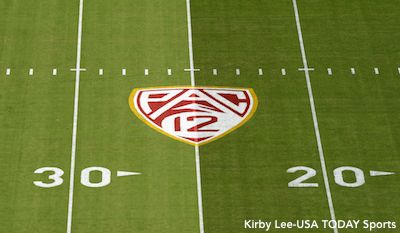In 1895, seven university presidents created the Big Ten -- the world's first academically-based athletic conference. It was a good idea, one good enough to catch on across the country.
The conferences that football's founding fathers created weren't just a random group of schools they threw together. They sought kindred spirits, schools that had similar academics, athletics and cultures, and they were amazingly good at finding them. So good, in fact, that nothing defined our nation's regions better than these conferences.

The term "Midwest" can refer to just about anything found between western Pennsylvania and Montana, and North Dakota to Oklahoma. But when someone said "Big Ten Country," you knew they meant the Great Lakes states. The Big Eight connected the Great Plains states, the Southeastern Conference covered the Deep South, and the Atlantic Coast Conference was, well, exactly what it said it was. It all made perfect sense.
What these conference schools all had in common was sometimes hard to pin-point, but -- to paraphrase Supreme Court justice Potter Stewart's famous line about pornography -- we knew it when we saw it. The teams plastered their league logos on their fields, their courts and their uniforms. Fans bragged not just about their teams, but about their leagues. If you wandered into a sports bar in any of those college towns, hanging overhead you would see the banners of every member of their league -- and that meant the banners of their rivals, too. And no other sport has rivalries like college football has rivalries.

This sense of belonging is foreign to pro sports fans, who never brag about the division their team is in. Of course, it's hard to, when the divisions and even conferences change all the time, and often make no sense. The Houston Astros and Milwaukee Brewers switched leagues, the Detroit Red Wings switched from the Western to Eastern Conference, and for 31 years the Atlanta Falcons played in the NFC's West Division. 'Nuf said.
But college conferences were models of stability until just a few years ago, when they tossed the jigsaw puzzle in the air. The frantic, thoughtless redrawing that followed was akin to the way the British carelessly carved up the Middle East in the 1920s, without knowing the difference between Sunnis, Shiites and Kurds, with disastrous results we're still living with to this day. This mindless game of musical chairs threatened many of the biggest reasons why millions of fans prefer college sports to the pros, including geography, history and identity.
When the dust settled, all 11 major conferences had gained or lost at least one member. The Big 12 suddenly had 10 teams, the Big Ten had 14, and the Atlantic Coast Conference had two divisions, "Atlantic" and "Coastal," even though those were the same things.
As MGoBlog founder Brian Cook has said, when you have 14 teams, you don't have a league, you have two leagues and a playoff. Michigan, for example, played Minnesota for the Brown Jug every year from 1919 to 1998. They've skipped four years since, they will skip this year, and they don't have any games scheduled after 2017, thanks to the Big Ten's new divisions. After the two schools played for 80 straight seasons, the battle for the Brown Jug will be the exception, not the rule, in future schedules.

I was struck by how many people who don't care too much about sports seemed to care a lot about this. For non-sports fans, college conferences are kind of like your parents as you get older. You might not check in with them every day, but it's good to know they're there, something you can count on in an uncertain world.
No longer. Rivalries that went back to the birth of modern sport vanished overnight: Oklahoma-Nebraska, Texas-Texas A&M and Kansas-Missouri, which started before football was invented, during the Civil War. The fans hated losing those games, but in college sports, the fans don't get a vote.
Yes, things change -- but that's exactly why the things that don’t change very much become more valuable, like national parks. You can only sell them once.
Well, now we're hearing about the inevitable next step: The formation of five "Mega Conferences" of 16 teams each, which everyone has been anticipating for years. This will mean each of the "Power Five" conferences will add two, four or six teams, as needed, to get to 16. That will no doubt set up another round of playoffs for the national title, requiring the finalists to play 16 games -- same as the NFL's regular season.

As former Michigan athletic director Bill Martin said, "We're chipping away at what makes college football unique." How many more chips can it survive before it's just a minor league? Once that happens, why would you watch a minor league, when the NFL's right there?
But what I find interesting -- and the people who run college football should find alarming -- is that this time, the casual fan doesn't seem to care, one way or the other. As they say, the opposite of love isn't hate, but indifference, and college sports are generating a ton of it.
The latest changes might come with a silver lining: After this round of musical chairs, the game might finally be over.
-- John U. Bacon is the author of four New York Times bestsellers. His latest book, Endzone: The Rise, Fall and Return of Michigan Football was published in September. He gives weekly commentary on Michigan Radio, teaches at the University of Michigan and Northwestern's Medill School of Journalism, and speaks nationwide on leadership and diversity. Learn more at JohnUBacon.com, and follow him on Twitter @johnubacon.





